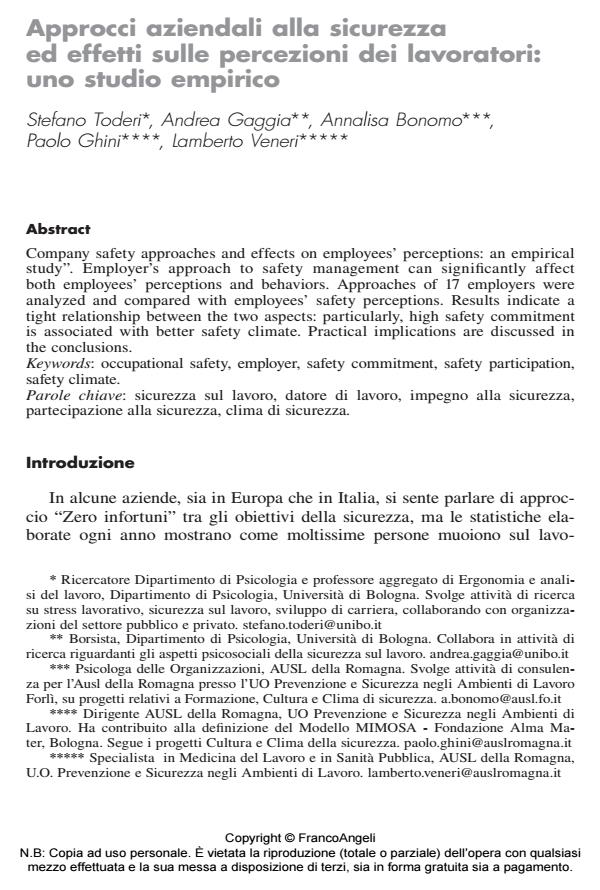Approcci aziendali alla sicurezza ed effetti sulle percezioni dei lavoratori: uno studio empirico
Journal title SICUREZZA E SCIENZE SOCIALI
Author/s Stefano Toderi, Andrea Gaggia, Annalisa Bonomo, Paolo Ghini, Lamberto Veneri
Publishing Year 2015 Issue 2015/1
Language Italian Pages 19 P. 80-98 File size 127 KB
DOI 10.3280/SISS2015-001007
DOI is like a bar code for intellectual property: to have more infomation
click here
Below, you can see the article first page
If you want to buy this article in PDF format, you can do it, following the instructions to buy download credits

FrancoAngeli is member of Publishers International Linking Association, Inc (PILA), a not-for-profit association which run the CrossRef service enabling links to and from online scholarly content.
Company safety approaches and effects on employees’ perceptions: an empirical study”. Employer’s approach to safety management can significantly affect both employees’ perceptions and behaviors. Approaches of 17 employers were analyzed and compared with employees’ safety perceptions. Results indicate a tight relationship between the two aspects: particularly, high safety commitment is associated with better safety climate. Practical implications are discussed in the conclusions.
Keywords: Occupational safety, employer, safety commitment, safety participation, safety climate.
Stefano Toderi, Andrea Gaggia, Annalisa Bonomo, Paolo Ghini, Lamberto Veneri, Approcci aziendali alla sicurezza ed effetti sulle percezioni dei lavoratori: uno studio empirico in "SICUREZZA E SCIENZE SOCIALI" 1/2015, pp 80-98, DOI: 10.3280/SISS2015-001007